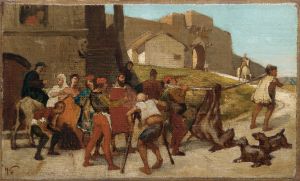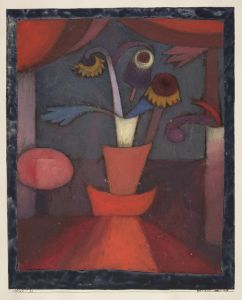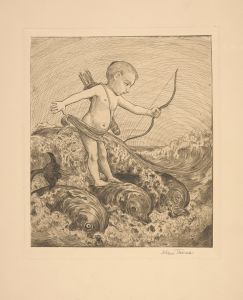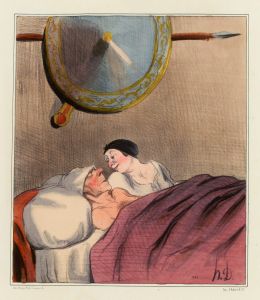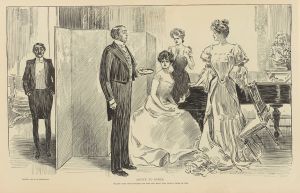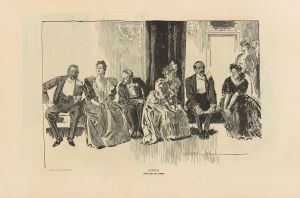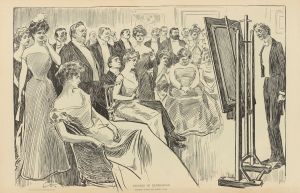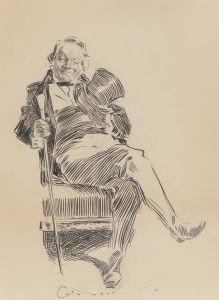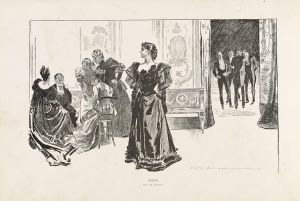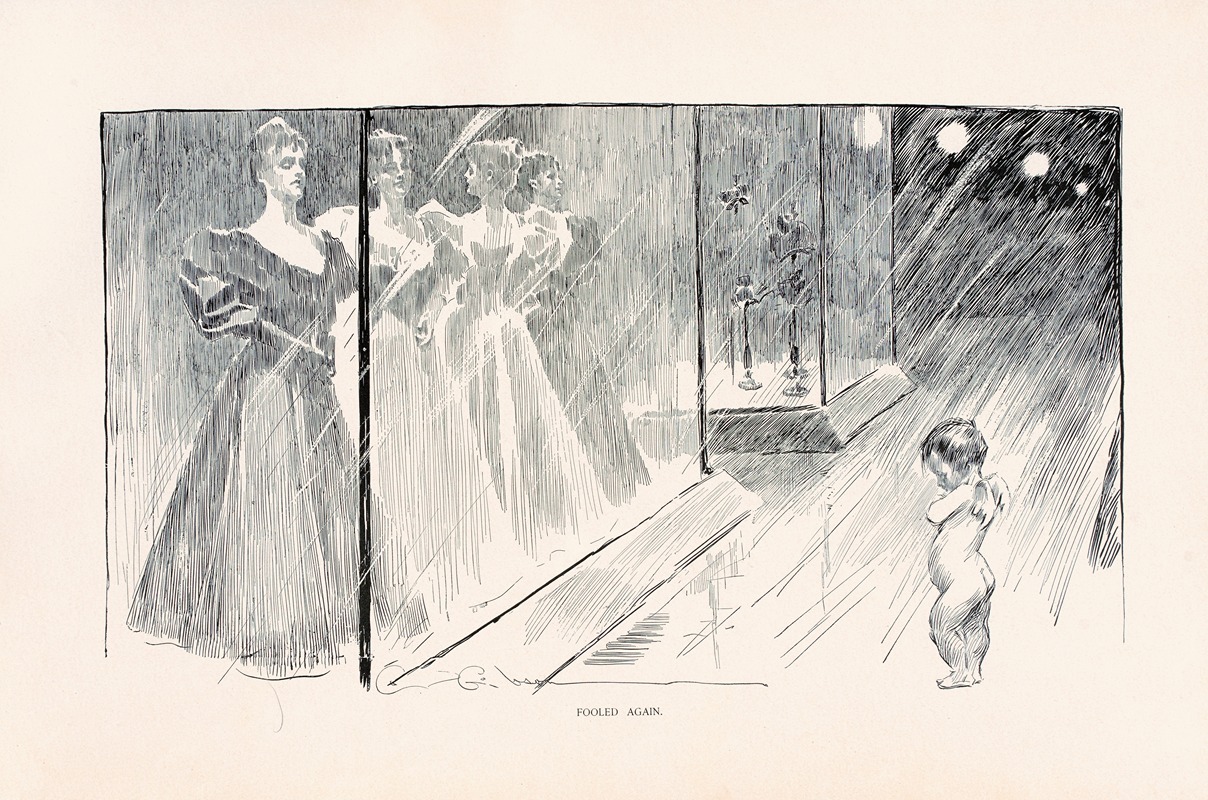
Fooled again
A hand-painted replica of Charles Dana Gibson’s masterpiece Fooled again, meticulously crafted by professional artists to capture the true essence of the original. Each piece is created with museum-quality canvas and rare mineral pigments, carefully painted by experienced artists with delicate brushstrokes and rich, layered colors to perfectly recreate the texture of the original artwork. Unlike machine-printed reproductions, this hand-painted version brings the painting to life, infused with the artist’s emotions and skill in every stroke. Whether for personal collection or home decoration, it instantly elevates the artistic atmosphere of any space.
"Fooled Again" is an iconic illustration created by the American artist Charles Dana Gibson. Gibson, born on September 14, 1867, in Roxbury, Massachusetts, was a prominent illustrator during the late 19th and early 20th centuries. He is best known for his creation of the "Gibson Girl," a personification of the ideal American woman of the time, which became a cultural icon.
"Fooled Again" was published in the early 20th century, during a period when Gibson's work was widely circulated in popular magazines such as Life, Harper's Weekly, and Scribner's. The illustration reflects Gibson's keen ability to capture social nuances and human expressions with his distinctive pen-and-ink style.
The artwork depicts a scene of social interaction, characteristic of Gibson's work, which often explored themes of romance, societal expectations, and the dynamics between men and women. In "Fooled Again," the central figures are typically a man and a woman, with the man appearing to be in a state of surprise or realization, while the woman maintains a composed demeanor. This dynamic suggests a narrative of misunderstanding or deception, a common motif in Gibson's illustrations that humorously commented on the complexities of relationships.
Gibson's illustrations, including "Fooled Again," were celebrated for their detailed and expressive line work. His ability to convey emotion and character through subtle facial expressions and body language made his work highly relatable and engaging to the public. The "Gibson Girl" archetype, which often featured in his illustrations, represented a new standard of beauty and independence for women, influencing fashion and societal attitudes of the time.
Charles Dana Gibson's influence extended beyond his illustrations. He played a significant role in the development of American illustration as a respected art form. His work was instrumental in the success of the magazines that featured his illustrations, contributing to the popularity of illustrated periodicals in the early 20th century.
"Fooled Again" remains a testament to Gibson's skill as an illustrator and his ability to capture the subtleties of human interaction. The illustration continues to be appreciated for its artistic merit and its reflection of the social dynamics of its time. Charles Dana Gibson's legacy endures through his contributions to the field of illustration and his impact on American visual culture.





